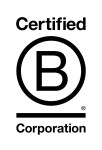Table of Contents
What are Low Income Designated Credit Unions
Low-Income Designated (LID) credit unions cater to communities predominantly falling within specific low-income thresholds, as determined by Census Bureau data and NCUA regulations.
The NCUA specifically describes a credit union that can be designated as low-income when “a majority of the credit union’s potential or actual membership qualifies as low-income, meaning their family income is 80 percent or less than the median family income for the metropolitan area where they live or for the national metropolitan area, whichever is greater.” More information about qualifications can be found on the NCUA’s website.
Many LID credit unions bring vital services to under-resourced communities, providing essential financial services such as loan support, technical assistance, and financial education. These credit unions create an outsized impact for the low-income communities that they serve. But did you know that they also get special benefits for serving these communities?
LID credit unions have a spectrum of resources uniquely available to them, designed to increase their access to deposits thereby enabling them to make impactful loans, grow their visibility and membership, and create valuable industry partnerships.

The New Covenant Dominion Federal Credit Union team, an LID credit union based out of the Bronx, New York.
Resources
Increasing Capital Access
Non-member and Outside Deposits from any source
LID credit unions are uniquely eligible to receive nonmember deposits up to $3M or 50% of total shares, whichever figure is greater. At a time when 70% of credit unions are naming growing retail deposits as a high priority, this flexibility is a key benefit that allows LID credit unions to better serve members by promoting lending, small business growth, and job creation.
Examples of outside sources of capital include corporate impact investors, foundations, depository solutions like Impact Cash®, grants, and donations.
TA grants and low-interest loans from the Community Development Revolving Loan Fund

Photo Credit: The National Credit Union Administration
The NCUA administers the Community Development Revolving Loan Fund (CDRLF) for credit unions. There are two programs within the fund:
The NCUA provides financial support in the form of technical assistance grants through the CDRLF which help LID credit unions build capacity and provide deeper support to the under-resourced communities that they serve. Award applications typically open in May and must be submitted in June. (Source)
In 2023, the CDRLF made approximately $3.5 million in awards available to LID credit unions, to support seven key areas of credit union development:
- Training
- Digital Services and Strengthened Cybersecurity
- Consumer Financial Protection
- MDI Capacity Building
- Underserved Outreach
- Impact Through Innovation
- Small Credit Union Partnership
The maximum amount for an award is determined by the type of funding initiative.
- Training—$5,000
- Digital Services and Cybersecurity—$10,000
- Consumer Financial Protection—$10,000
- MDI Capacity Building—$50,000
- Underserved Outreach—$50,000
The Impact Through Innovation and the Small Credit Union Partnership initiatives were awarded as continuation grants, where applicants applied for funding to cover three years of project costs (up to $300,000 for the Impact Through Innovation initiative and $150,000 for the Small Credit Union Partnership Initiative).
The NCUA also provides for a revolving loan fund to assist LID credit unions’ efforts in supporting their members. A credit union can apply for a loan at any time, which will be repaid in five years. The NCUA Office of Credit Union Development (OCUD) can tailor the specific terms and conditions of the loans to meet LID credit unions where they are. All loans, however, carry a fixed interest rate, which the NCUA board sets annually (source).
Partnerships
There are a variety of partnerships available to credit unions that can help them gain access to deposits, build capacity, improve their technological capacity, and serve more members.
Available to all credit unions are partnerships in various state leagues as well as the Credit Union National Association, which is the national trade association for both state- and federally chartered credit unions located in the United States
CNote is a fintech platform committed to serving LID credit unions by providing a source of deposits through a network of corporate impact investors. There is no cost or fee for LID credit unions to participate (beyond the interest paid on deposits). CNote also shares marketing resources to spotlight partner LIDs.
LID credit unions can also consider partnerships with other LID credit unions. Drawing from the experience of these organizations, LID credit unions can pioneer new lending initiatives, products, and services to best serve their members.

Visibility Benefits
Many LID credit unions are creating transformational impact for the under-resourced communities that they serve. There is overwhelming evidence that today’s consumers, workers, and investors are interested in that work and in the impact that LID credit unions do on a daily basis.
- “Seventy-seven percent of consumers are motivated to purchase from companies committed to making the world a better place, while 73 percent of investors state that efforts to improve the environment and society contribute to their investment decisions.”
- Employees and consumers want to involve themselves with organizations that are benevolent stewards of their communities. More than 75% of employees want to be involved in their organization’s volunteering and philanthropic programs and 91% of millennials would switch brands to one associated with a cause.
- 72% of U.S. consumers believe it is more important than ever to buy from companies that reflect their values, and 81% of millennials expect companies to make a public commitment to good corporate citizenship.
This is great news for LID credit unions. By demonstrating the impactful nature of their work, they can attract not only new members but also new employees and new investors.
These statistics demonstrate how shareholders are craving opportunities to align themselves with community-minded institutions like LID credit unions. By demonstrating the impactful nature of their work, LID credit unions can attract not only new members but also new employees and new investors.
Exception from the Statutory Cap on Member Business Lending
Another resource available to LID credit unions is exemption from compliance with the aggregate member business loan limit. A member business loan means any commercial loan, line of credit, or letter of credit.
The aggregate limit on a federally insured credit union’s net member business loan balances “is the lesser of 1.75 times the actual net worth of the credit union, or 1.75 times the minimum net worth” (required under section 1790d(c)(1)(A) of the Federal Credit Union Act).
LID credit unions are not required to abide by this rule. As a result, they can be more flexible with the lending they do to small businesses, which can be a lifeline to the low- to moderate-income communities that they serve. (Source)
Conclusion
The unique resources available to Low-Income Designated (LID) credit unions are invaluable assets in their mission to serve under-resourced communities. From access to capital, eligibility for grants and low-interest loans, to forging impactful partnerships and exemptions from certain lending limitations, these resources empower LID credit unions to make a substantial difference in the lives of their members.
In harnessing these resources, LID credit unions continue to demonstrate the profound impact they can make, not only within the financial landscape but in uplifting the communities they serve, ensuring financial inclusion and fostering sustainable growth for the members they serve.
Infographic
View and download a copy of the infographic
This information should not be relied upon as research, investment or financial advice, or a recommendation regarding any products, strategies, or any security in particular. This material is strictly for illustrative, educational, or informational purposes and is subject to change. Investing involves risks, including possible loss of principal.









